Every day, we witness the natural processes of sunrise and sunset. This phenomenon remains relatively consistent, with the sun always rising and setting on one side of the Earth. While the visual appearance of the different sides of the world may vary slightly depending on the time of year and other factors, this does not hinder the use of the sun as a navigational tool during wilderness expeditions. In this article, we will explore the factors that influence the location of the sun’s setting and how this knowledge benefits travelers.

Basic details
We reside within the solar system, which is situated in the Milky Way galaxy. The focal point of our star system is the Sun. It is measured that the distance from our planet to the Sun is one astronomical unit, equivalent to 149.6 million kilometers. The Sun is categorized as a yellow dwarf. In comparison to other stars, it is considered relatively small in size.
In sync with the rest of the planets within the system, the Earth orbits around the Sun. This phenomenon is a result of the gravitational force exerted by the star. Its mass is so immense that smaller celestial bodies are attracted towards it. All planets have a steady orbit around the Sun.
However, this is not the reason for the change in day and night. The change is actually caused by the rotation of the Earth on its axis. As the Earth rotates, sunlight only shines on one side, creating daytime. On the other side, light is still present, but it comes in the form of rays reflected from the Moon and other celestial bodies. Therefore, when one hemisphere of the Earth experiences a sunrise, the other hemisphere experiences a sunset.
What does sunrise mean?
Sunrise is a specific time of day when only the upper portion of the Sun is visible above the horizon. During this time, the Sun gradually ascends in an arch-like manner. From an astronomical standpoint, this is the moment when the star fully crosses over the horizon, moving upwards. Consequently, we witness the illumination from the ascending Sun before it physically emerges on the horizon. This phenomenon is a result of the refraction of rays in the atmosphere.

This phenomenon is known as refraction. The higher the observer’s position, the more pronounced it becomes. Consequently, the rays will become visible earlier. It is also influenced by the latitude, as the change in refraction can significantly extend the duration of daylight hours. While at the equator the increase is only 10 minutes, at the poles it can be as long as 2 days.
By understanding the concept of refraction and its variation at different latitudes, it is possible to determine the time of sunrise without relying on clocks or other tools.
What is the definition of sunset?
Sunset refers to the specific moment when the Sun descends below the horizon. This astronomical phenomenon, also known as sundown, occurs as the star gradually moves downward and crosses the horizon line. Additionally, refraction plays a role in this event, causing an observer on Earth to perceive the sunset slightly later than it actually happens.

How to differentiate between a sunset and a sunrise
It can be crucial to distinguish whether you are witnessing a sunset or a sunrise, especially if you find yourself in an unfamiliar location and need to determine your whereabouts. While one option is to simply wait and observe the Sun’s movement, there is a simpler method.
The most straightforward way is to discern based on the color of the sky, the rays, and the Sun itself:
- During a sunset, these elements appear more vibrant and intense, with a prevalence of red, yellow, and orange hues;
- On the flip side, during a sunrise, the sky takes on cooler tones such as pinks, purples, and blues.
The variations in hues occur as a result of the diurnal heating of the earth and atmosphere by the sun’s radiant energy. Warmer gases possess a lower density than colder gases, causing them to ascend. Concurrently, minuscule dust particles ascend as well. When sunlight traverses through this atmospheric medium, its color undergoes alteration. Conversely, during the nocturnal period, as the atmosphere cools, it descends along with the particles of dust, resulting in a more subdued sky color at daybreak.
Twilight
Twilight refers to the period of time between sunset and nightfall. During this time, the Sun is no longer visible in the sky or on the horizon, but it is not yet completely dark. This phenomenon occurs because of the Earth’s atmosphere. The Sun’s rays continue to be refracted and scattered in the atmosphere, reaching areas where they cannot directly reach. As the Sun moves further below the horizon, twilight gradually diminishes, eventually transitioning into night.
There are actually three distinct types of twilight, which are classified based on the number of degrees the Sun has descended below the horizon:
- 0-6°. This is the period known as civil twilight, characterized by clear visibility of the horizon line. Civil twilight is typically referred to when discussing twilight. At the start of civil twilight, the sky remains bright and various colors are reflected in the rays, which photographers often take advantage of. It is also the time when car headlights and streetlights are turned on, as the stars become almost invisible;
- 6-12°. The next stage is known as navigational twilight. It occurs when the horizon line becomes faint and difficult to see. Navigational twilight gets its name from the abundance of stars that fill the sky during this period. These stars are used to determine direction and location, whether on land or at sea;

- The time of twilight’s onset varies depending on your location and the time of year. For instance, at the equator, twilight lasts approximately 20-30 minutes, while in temperate latitudes it can last up to 2 hours, and at the Arctic Circle, it can extend for up to 3 weeks.
The direction of the sunrise and sunset is commonly believed to be in the east and west, respectively. However, this is only true during the equinoxes in fall and spring. The rest of the year, the sunrise and sunset positions deviate slightly. These deviations are crucial for navigation, so it is important to consider them. Let’s examine these influencing factors in more detail.
Various Types of Hemispheres and Their Distinctions
There are a total of four distinctive hemispheres: the Western, Eastern, Southern, and Northern hemispheres. The demarcation between the Western and Eastern hemispheres is determined by the prime meridian, also known as the Greenwich meridian. Therefore, everything to the right of this meridian on a map is considered to be part of the Eastern Hemisphere, while everything to the left is categorized as the Western Hemisphere. As the Earth continuously rotates on its axis, day and night alternate in both hemispheres. When it is daytime in the West, it is nighttime in the East, and vice versa.
When it comes to figuring out which direction the Sun rises from, the Southern and Northern hemispheres play a crucial role. These hemispheres are divided by the Equator, with everything above it considered north and everything below it considered south. This division is important because it means that while one hemisphere experiences winter, the other hemisphere experiences summer. Spring and fall also switch places depending on which hemisphere you’re in.
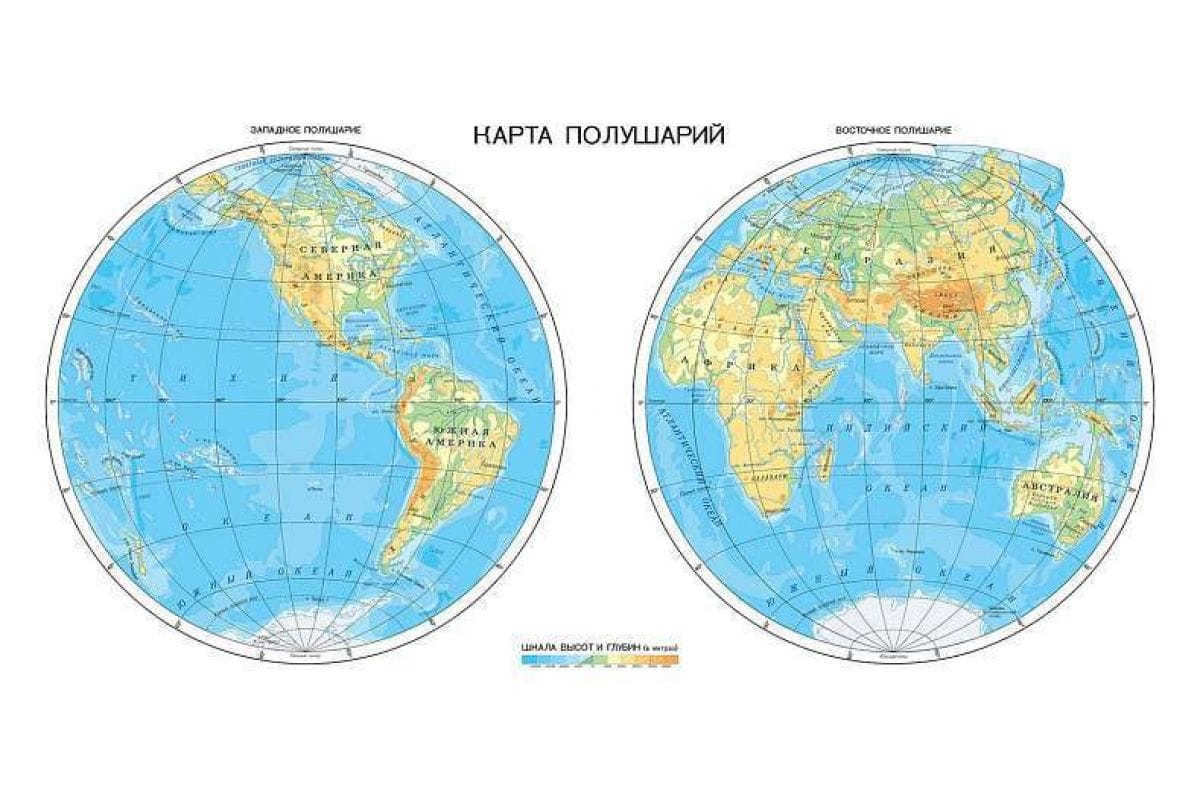
This phenomenon occurs due to the Earth’s orbit not being perfectly aligned. Throughout the yearly cycle, it moves slightly up and down in relation to the star. As a result, there are periods when more sunlight reaches the Northern Hemisphere and other periods when more sunlight reaches the Southern Hemisphere. The hemisphere that is exposed to the sun receives more heat and light, leading to higher temperatures. The hemisphere experiencing “winter” receives only a fraction of the sunlight, which either travels at an angle or scatters through the atmosphere.
Which direction does the Sun rise from?
In order to navigate or orient yourself correctly, it is important to understand the differences between the hemispheres. This is because the Sun rises and sets in different directions at different times of the year. Here are the directions in which sunrise occurs in different seasons:
- Winter: in the southeast;
- Summer: in the northeast;
- Fall: between the northeast and southeast;
- Spring: between the northeast and southeast.
It’s worth noting that between the northeast and southeast is the east, but it is not a reliable reference point. The position of the Sun shifts throughout the season. Only on March 21 or September 23 does the Sun rise directly above the east. Similarly, in winter and summer, the direction of the Sun’s light is not consistent and changes throughout the season.
Where the Sun goes down
When it comes to sunset, the direction it sets also depends on the time of year:
- During winter, it sets in the southwest
- During summer, it sets in the northwest
- During fall, it sets between northwest and west
- During spring, it sets between northwest and west
The sun only sets in the west on the days of the fall and spring equinoxes. Additionally, knowing which hemisphere you are in will help determine the length of daylight hours. Due to the Earth’s tilted position, only one part of the Earth is closer to the Sun. The difference in the duration of day and night is greater the further south you are in the Southern Hemisphere and the further north you are in the Northern Hemisphere. In contrast, at the Equator, there is minimal difference between the two. And at the poles, each lasts for 6 months.
Does the sun always rise and set in the east and west?
The sun only sets and rises directly in the west and east on two specific days each year: the fall and spring equinoxes. During these equinoxes, the sun is positioned exactly in the middle in terms of its distance from the planet, directly overhead for the observer. However, due to the Earth’s movement, the point at which the sun sets over the horizon shifts slightly each day. This means that in terms of sunrise, it gradually moves closer to either the northeast or southeast. Therefore, there are only two days a year when it is in a perfect position, making it possible to use the sun as a compass without any additional tools or information.
The Sun’s movement
When observing from Earth and disregarding the variations in the Earth’s tilt during different seasons, the Sun consistently rises in the east and sets in the west every day. Throughout the day, it traverses the sky, with its elevation above the horizon varying depending on the time of year.
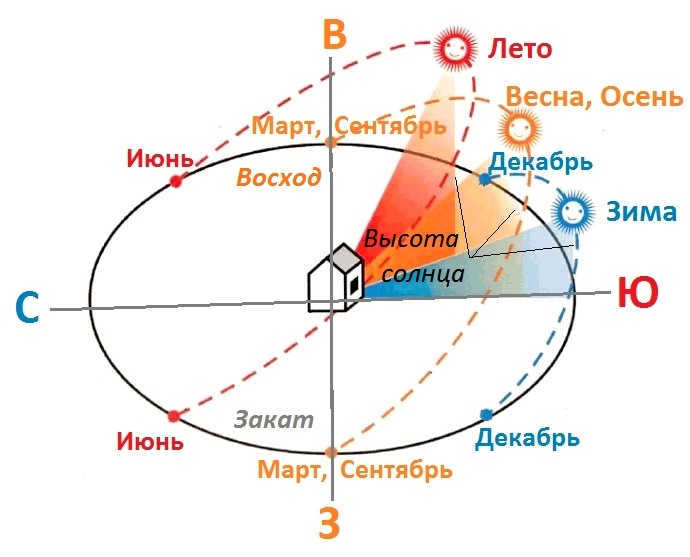
Following the sunrise, the sun ascends, reaching its highest point. At a certain moment, the sun is positioned directly above the Earth. This moment is known as noon. In certain areas, shadows are almost non-existent during this time, as the sun’s rays directly illuminate all objects. This can make it challenging to navigate. During this time, the sun emits the maximum amount of light and heat. Subsequently, the sun begins to descend, gradually moving towards the horizon until it sets, disappearing beyond the horizon line.
Position of the Sun at Solar Noon
Solar noon is frequently used as a reference point for determining direction based on the Sun’s position. Traditionally, it was believed that the Sun is south of the observer during this time. However, due to the Sun’s constantly changing position relative to the Earth, this statement is not entirely accurate. It is important to note that one should orient themselves to solar noon, not the official noon time, which varies depending on the observer’s longitude.
The official noon time is typically 12:00 local time, but this is an average that varies across different countries. In some cases, deviations of over 1 hour can occur from the moment when the Sun reaches its highest point. This moment is known as solar noon, and its timing depends on the observer’s location. For instance, in Moscow, it occurs at 12:30, in Minsk at 13:10, and in New York at 11:56.
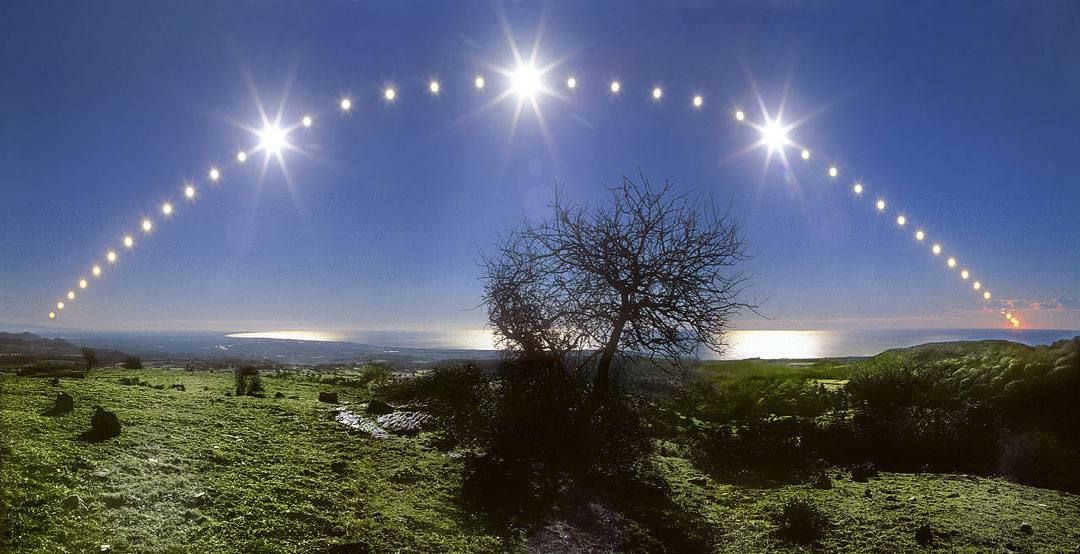
The position of the sun is also influenced by the latitude. In the middle latitudes of the Northern Hemisphere, the sun will be in the southern part of the sky at noon. However, in the Southern Hemisphere, it will be the opposite – the sun will be in the northern part of the sky. These differences should be considered when traveling to different countries.
The Equator line presents the most challenging situation. Throughout the year, the sun’s position at noon will change three times. After the autumn equinox, it will be in the south. After the spring equinox, it will be in the north. During these days, the sun will be directly overhead, making it difficult to orient oneself.
The motion of the Sun as observed from outer space
When viewing from outer space, the transitions between day and night can only be discerned by observing the alterations in light in the Western and Eastern Hemisphere. It is important to note that during this time, the Sun remains stationary, while our planet rotates counterclockwise, resulting in the phenomenon of day and night. Consequently, it is not feasible to witness the sunrise and sunset when observing from an external vantage point. However, it is entirely possible to observe these celestial events from a space station that orbits the Earth.

Indeed, the Sun, similar to all other stars, is also in motion. However, it does not orbit the Earth and cause the cycle of day and night. In our solar system, all celestial bodies revolve around the yellow dwarf star, as it is the most massive object and acts as the center. Therefore, the Sun revolves around this center, which is located somewhere within the Galaxy.
Scientists believe that the path of our star’s movement is influenced by an as-yet-undiscovered massive celestial object. They have observed this orbit by tracking the positional changes of stars and other cosmic entities in relation to the solar system. Although the deviations in their coordinates are subtle, they still indicate the motion of the star.

The Arctic Circle and other regions of the world
Both the Arctic Circle and the Antarctic Circle are located at the extreme ends of the Earth. The Antarctic Circle is situated at the bottom, while the Arctic Circle is situated at the top. As a result, during the winter season in these hemispheres, very little sunlight reaches these areas. Conversely, during the summer season, these regions experience constant sunlight.
As a consequence, polar nights and days occur in these areas. At the highest latitudes, these periods can last for up to 6 months. During these times, the Sun either shines continuously or, conversely, the rays barely reach the observer throughout the year.

Reasons why people monitor the movement of the Sun
Keeping track of the current position of the Sun is primarily necessary for navigation purposes. By knowing the direction in which it rises or sets during a specific time of the year, one can determine the correct path to follow. While a compass is typically used for navigation, alternative methods are required in its absence.
One of the simplest methods is orienteering based on the position of the Sun at noon, as explained earlier. Additionally, determining the cardinal directions based on the location of sunrise or sunset is another common approach.
Sun-based Orientation on the Terrain
A popular method for determining the cardinal directions at sunrise is to stand up and extend your right hand towards the Sun, while pointing your left hand in the opposite direction. By taking into account the ideal situation (equinox), you can determine that north will be in front of you. Similarly, if you are orienting yourself towards the sunset, you can follow the same procedure, but this time point your left hand towards it.
However, it is important to remember that the locations of sunrise and sunset vary in different seasons. In winter, the sunrise will be in the southeast, and in summer, it will be in the northeast.

The second method of navigation involves using local objects. To use this method, you should wait for a sunny afternoon when the sun is at its highest point in the sky. However, determining the exact time can be challenging, especially if you don’t have a watch. In this case, you can look at vertically aligned objects such as trees or poles. When their shadows are shortest, it is noon. At this time, the shadow will point towards the north and the sun will be in the south. It’s important to note that the directions of north and south change at different latitudes.
There are numerous alternative methods for determining the cardinal directions without relying on a compass:

- Bark. The texture is rougher on the northern side compared to the southern side. You can confirm this by making small cuts. This is most noticeable on birch trees;
- Lichens and mosses. These typically grow on the northern side of rocks, trees, and stumps. In some cases, they completely cover the surface. Pay attention to which side has a greater amount;
- Tree resin. It is only secreted during warm weather. There is a higher concentration of it on the southern side;
- Stumps. Examine the annual rings. They are denser on the northern side;
- Ant hills. The southern side of these mounds is more gentle in slope.
While these techniques may not be completely accurate, they can be helpful in emergency situations. We recommend utilizing multiple methods simultaneously to improve your orientation.
Conclusion
Knowing the locations of sunrise and sunset can assist in determining the cardinal directions. This is particularly important for travelers and tourists exploring unfamiliar areas. Typically, a compass is relied upon for direction, but in the absence of one, alternative methods must be employed. Ideally, the Sun rises in the east and sets in the west; however, its position can vary throughout the year. Therefore, when orienting oneself, various factors such as the time of year, hemisphere, latitude, and longitude must be taken into consideration. If celestial bodies are not visible, natural landmarks can serve as reliable guides.


Currently, 58,742 educational institutions have access to additional cumulative discounts ranging from 2% to 25%. To determine the applicable discount for all staff members of your educational institution, please log in to your personal Infoworks account.


Enroll in our professional retraining course
Ensuring the safety of technological processes and productions
We offer the opportunity to combine your educational institution’s discount with our current discount, which is determined by the number of colleagues who have already completed Infoworks courses.
Currently, there are additional cumulative discounts available for 58,742 educational institutions, ranging from 2% to 25%. To find out the specific discount applicable to all employees of your educational institution, simply log in to your personal Infoworks account.


Course for Advancement in Professional Skills
Advantages of teaching foreign languages bilingually
We can combine your educational institution’s discount with this offer (the amount will depend on the number of colleagues from your institution who have enrolled in Infowork courses).
Currently, there are 58,742 educational institutions that provide additional discounts (ranging from 2% to 25%). To find out the specific discount available for all employees of your institution, please log in to your personal Infoworks account.


Features of teaching Russian literature in schools considering the updated FSES LLC
Description of the presentation by individual slides:

The Ecliptic is a circular path on the sky that represents the apparent annual motion of the Sun. It moves from west to east at a rate of 1 degree per day.
The sidereal year is the time it takes for the Sun to complete one revolution along the ecliptic. It lasts for approximately 365 days, 6 hours, 9 minutes, and 10 seconds, or 365.2564 solar days.
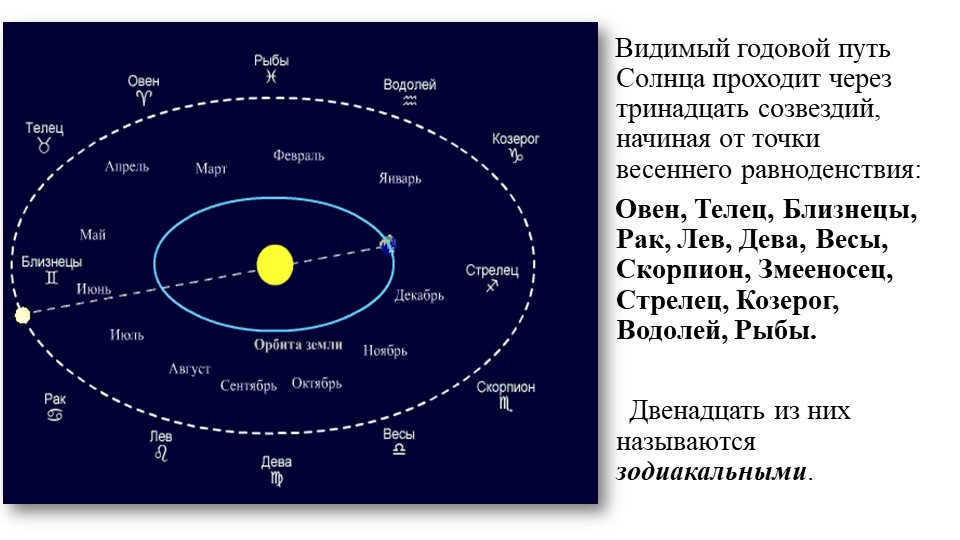

Slide 3: The Sun’s annual path can be seen passing through thirteen constellations, starting from the vernal equinox. These constellations are Aries, Taurus, Gemini, Cancer, Leo, Virgo, Libra, Scorpio, Serpentor, Sagittarius, Capricorn, Aquarius, and Pisces.
Out of these thirteen constellations, twelve are known as zodiacal constellations.
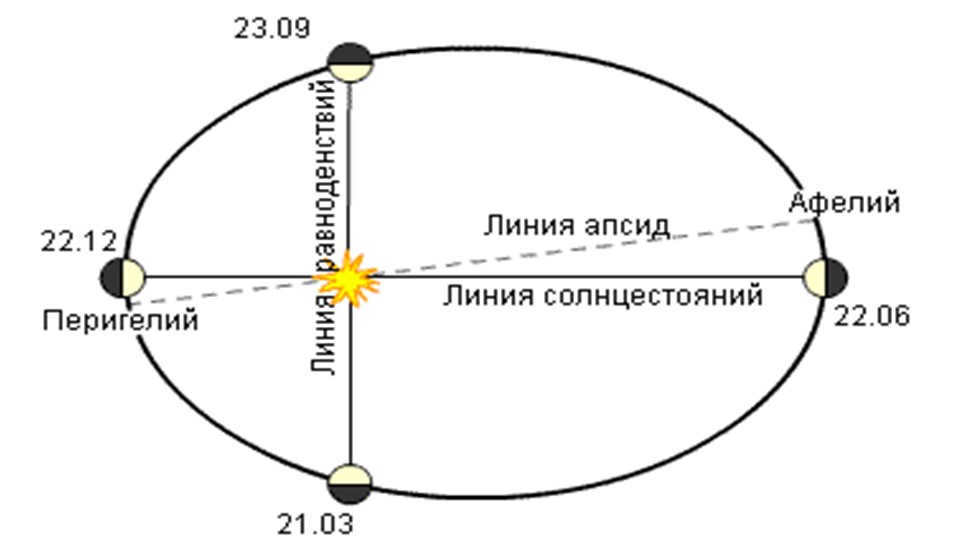
Slide 5: The duration of the tropical year is the period between two successive occurrences of the Sun passing through the vernal equinox point. (365.2422 solar days)
The tropical year is responsible for the variations in seasons on our planet Earth.
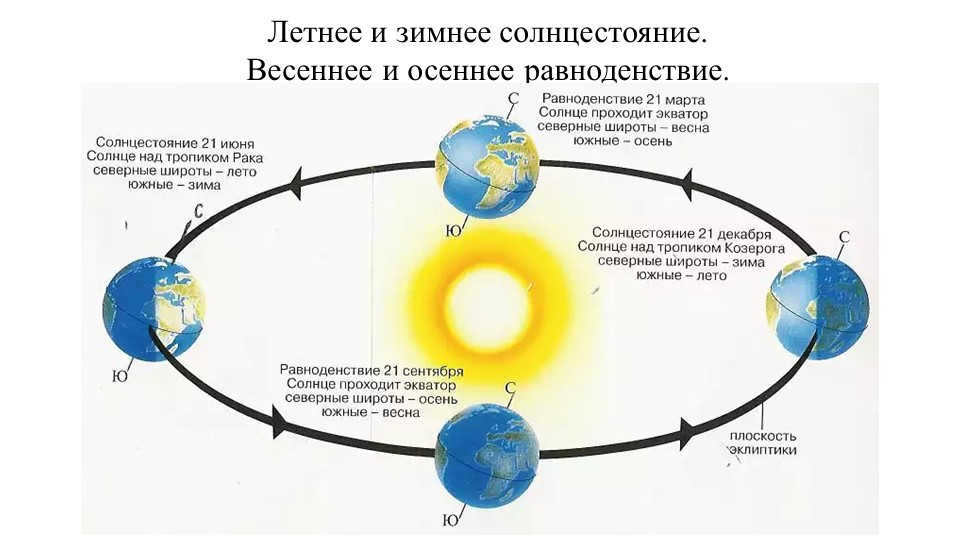

Slide 7 The Earth’s axis of rotation is tilted at an angle of 66°34´ to the plane in which it orbits. The Earth’s equator is inclined at an angle of 23°26´ to the orbital plane, which means that the angle between the ecliptic and the celestial equator is also 23°26´.
During the vernal and autumnal equinoxes (March 21 and September 23), the Sun is located at the celestial equator and has a declination of 0°.
Both the northern and southern hemispheres of the Earth receive equal amounts of illumination: the line separating day and night runs directly through the poles, resulting in equal day and night lengths at all locations on Earth.
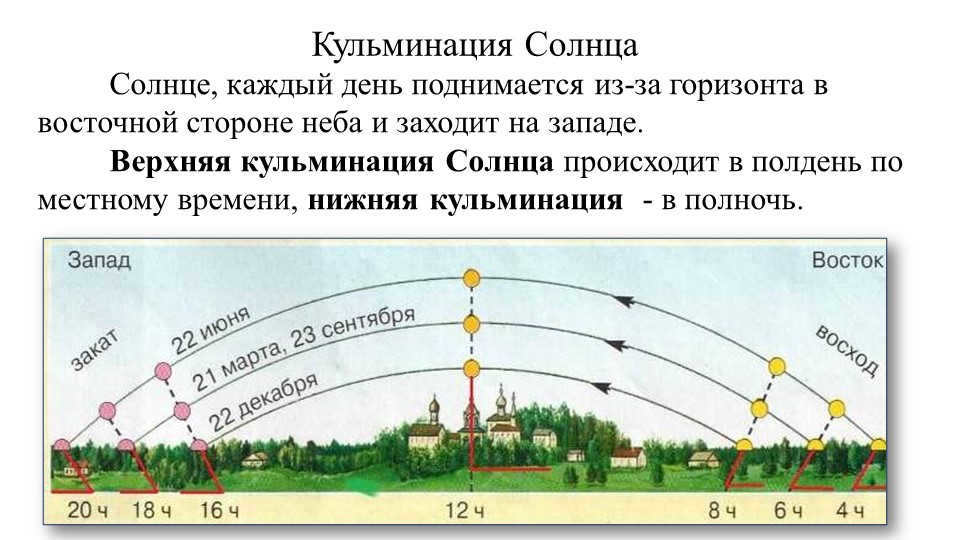

Slide 8: The Path of the Sun
Every day, the Sun emerges from the eastern horizon and descends behind the western horizon.
The Sun reaches its highest point in the sky at noon local time and its lowest point at midnight.

10 slides depicting the daily movement of the Sun during the equinoxes and solstices at the Earth’s poles, equator, and middle latitudes.


On the 11th slide, we observe the Sun’s movement at the North Pole of the Earth where the latitude is φ = 90°. This phenomenon occurs on March 21st during sunrise. The Sun follows a spiral path that is almost parallel to the horizon, gradually rising higher and higher.
By June 22nd, the Sun reaches its maximum height above the horizon, with an angle of 23° 27′. After this, the Sun starts to descend, following a spiral path that is almost parallel to the horizon line.
On September 23rd, the Sun sets at the North Pole of the Earth. From March 21st to September 23rd, the North Pole experiences polar day, where the Sun remains above the horizon for the entire period. From September 23rd to March 21st, the North Pole experiences polar night, where the Sun remains below the horizon for the entire period.

The Arctic Circle at 66°33′ is divided into 12 sections. Each section experiences a unique phenomenon once a year, lasting exactly 24 hours. On June 22, one section experiences the polar day, where the sun does not set. Conversely, on December 22, another section experiences the polar night, where the sun does not rise. On March 21 and September 23, the day and night are equal, lasting 12 hours in each section. However, on all other days of the year, the day and night are not equal in duration.

Slide 13 Middle latitudes: φ = 66º33' – 23º27'
Day and night are equal in duration only twice a year:
March 21 marks the vernal equinox, when day and night are 12 hours long.
September 23 marks the autumnal equinox, when day and night are also 12 hours long.
On these specific days, the Sun rises in the east and sets in the west.
June 22 is the longest day of the year, with the Sun reaching its maximum height above the horizon.
December 22 is the shortest day of the year, with the Sun at its lowest altitude above the horizon.

Slide 14 The Tropic of Cancer is located at a latitude of φ = 23º27'.
Once every year, on June 22nd, the Sun reaches its highest point in the sky, known as its zenith. This day marks the summer solstice.
For the rest of the year, the Sun reaches its highest point to the south.
During the summer solstice, the duration of day and night is equal, with each lasting 12 hours.


On slide 15, we can observe the Earth’s Equator with a latitude of φ = 0°. At this location, day and night are always equal, lasting for 12 hours each. The Sun reaches its zenith twice a year, specifically on March 21 and September 23, during the vernal and autumnal equinoxes.

The Sun plays a vital role as the primary energy source for all life on our planet. However, there is a common misconception among people that the east is always the fixed direction from which the sun rises, and the west is where it sets below the horizon. In reality, this only holds true on two specific occasions each year – the autumn and vernal equinoxes, occurring on September 23rd and March 21st, respectively. For the rest of the year, the precise positions of sunrise and sunset vary depending on the geographical latitude of a location and the time of year.
What is the definition of a sunrise?
Knowing the direction from which the sun rises in the morning can be beneficial for navigation and can even serve as an alternative to a compass. A sunrise is defined as the time period when the upper edge of the sun’s disk becomes visible above the horizon.
In the field of astronomy, this term refers to the complete crossing of the sun across the horizon line. The beginning of this phenomenon is influenced by a process known as atmospheric refraction, which is the bending or distortion of light rays in the earth’s atmosphere.



Definition of a Sunset
A sunset is a natural occurrence that occurs when the upper edge of the sun’s disk descends behind the horizon. As it approaches the horizon, the sun’s brightness diminishes, resulting in a gradual shift in color. Initially, the disk takes on a yellowish hue, which then transitions into terracotta before smoothly transforming into various shades of red.
Simultaneously, the sky overhead undergoes a transformation in color, ranging from golden to scarlet-red against a backdrop of greenish-blue.
Furthermore, as the sun continues to descend below the horizon, the colors become more intense and vibrant. Due to atmospheric refraction, the time of sunset, much like sunrise, appears later when observed from the Earth’s surface compared to its actual occurrence.






How to differentiate between a sunset and a sunrise
Some may think that sunrises and sunsets are indistinguishable from each other. However, this is not true. The rays of the pre-dawn are bright enough, and their color scheme consists of delicate pink and purple shades.
On the other hand, the disk and the sky during sunset take on more intense red tones. The reason for this lies in the visibility of dust particles, which, due to lower humidity in the evening and increased airflow, rise up into the atmosphere.
Types of hemispheres and their differences
When considering the question of where the sun rises, it is important to keep in mind that the Earth is divided into four hemispheres: the Northern and Southern hemispheres along the equator, and the Western and Eastern hemispheres along the 180 and Greenwich meridians. These latter two hemispheres are separated by time zones. During the day in the Western Hemisphere, it is night in the Eastern Hemisphere, and vice versa. This phenomenon is a result of the Earth’s rotation on its axis.
The first two hemispheres play a significant role in the changing of seasons, which occurs due to the Earth’s orbit around the Sun and the uneven distribution of light.
For instance, when winter cold dominates the Northern Hemisphere, summer heat prevails in the Southern Hemisphere, and vice versa. During spring in the Northern Hemisphere, the sun rises in the northeastern direction and sets in the northwestern direction. In summer, the sun rises in the northeast and sets in the northwest, while in fall, it rises in the southeast and sets in the southwest. During the winter months, the sun rises in the southeast and sets below the horizon in the southwest. To witness the sunrise in the east and sunset in the west, one must patiently await the days of the spring or fall equinox. It is worth noting that in the Northern Hemisphere, the celestial luminary moves in a clockwise direction from the south to the west. In the Southern Hemisphere, it moves from east to west once again, following the motion of a clock’s hands. Therefore, a traveler who is lost in the vastness of Australia may easily mistake the west for the east.
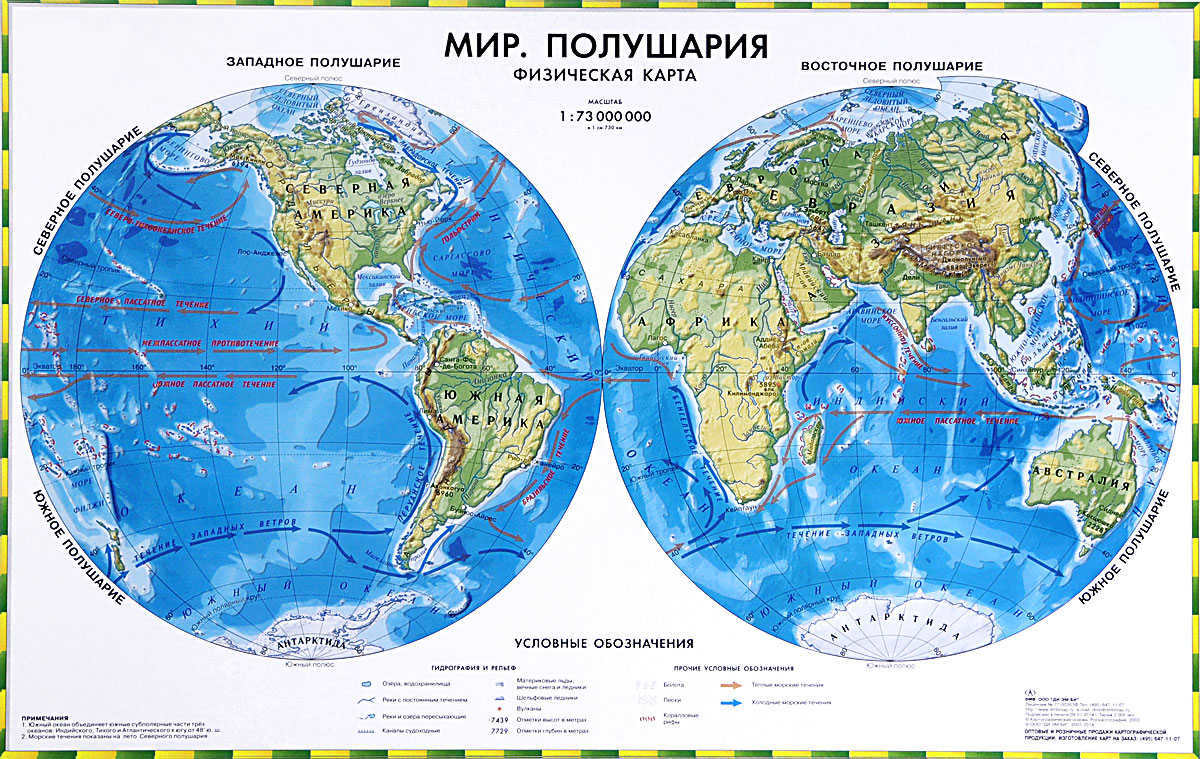
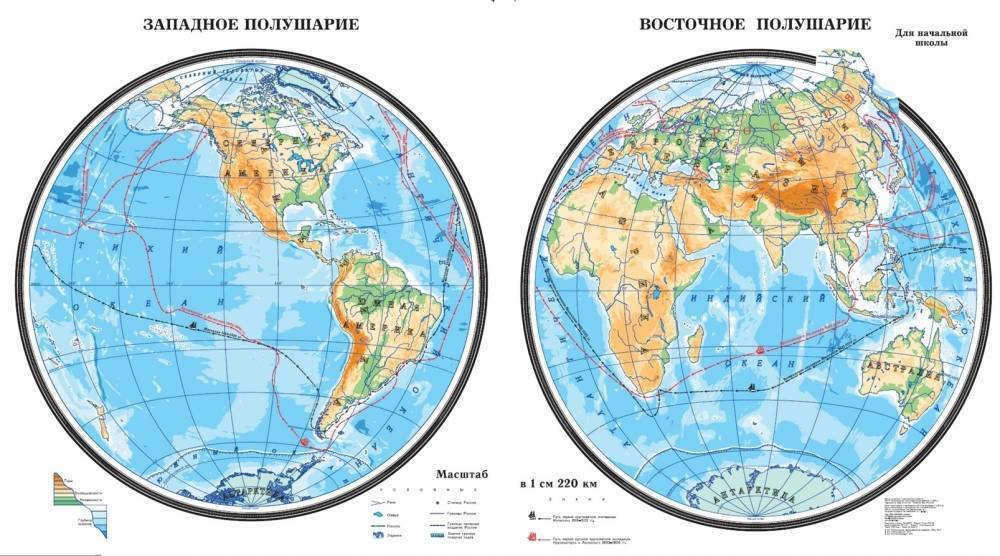
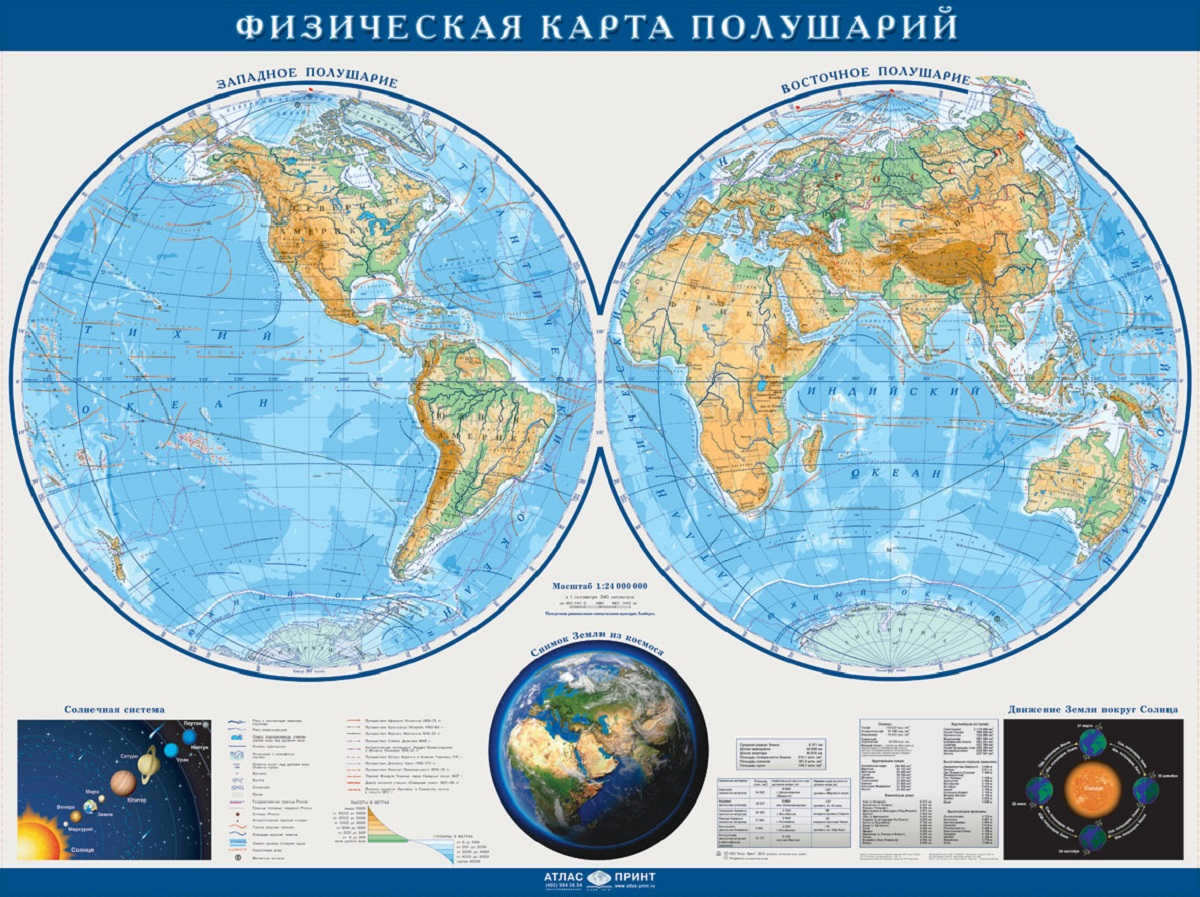
Where does the Sun rise?
The Sun rises in the eastern part of the sky, but the exact direction varies depending on the season. During winter, it rises in the southeast, while in summer it rises in the northeast. In spring and fall, it rises directly in the east. As the spring solstice passes, the points of sunrise and sunset gradually shift towards the north. Around June 20-21, the sunrise is observed at the highest point in the northeast, and then the Sun rises a little further south each day.
How the Sun moves
- When it is 6:00 or 7:00 a.m., the Sun can be seen in the eastern part of the sky;
- At 12 noon, the Sun moves towards the south, reaching its highest point in the sky;
- By 6-7 p.m., the Sun sets in the western horizon, gradually descending and disappearing from view.
If you observe the position of the Sun on the celestial sphere every day throughout the year at the time of its highest point, you will notice a large circle. This circle represents the apparent path of the center of the Sun as it moves across the sky.
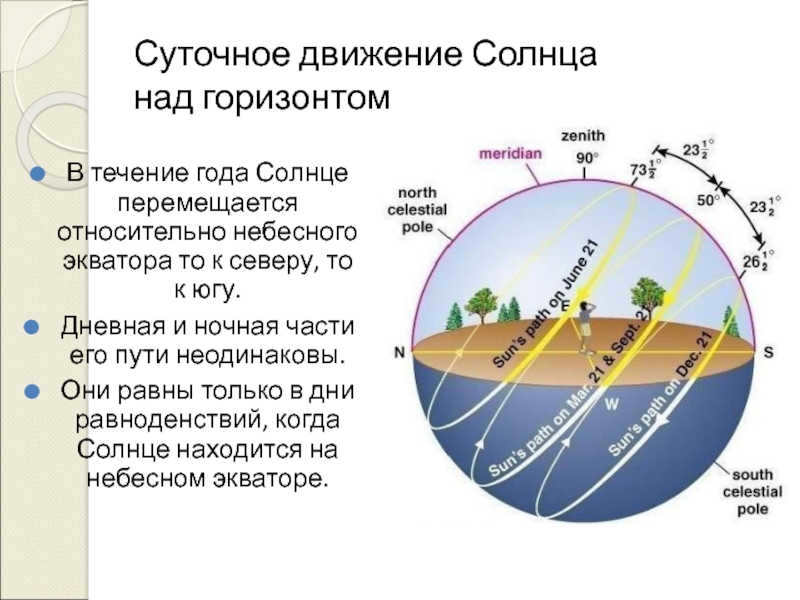
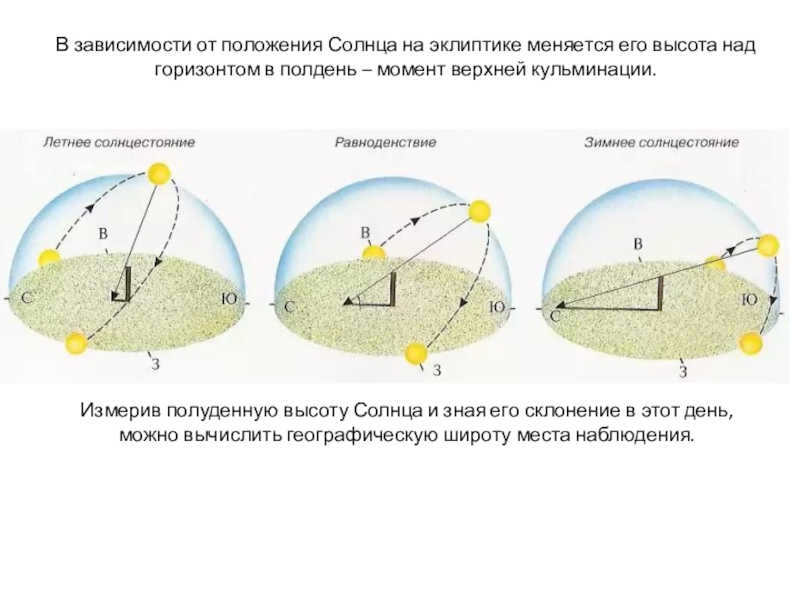
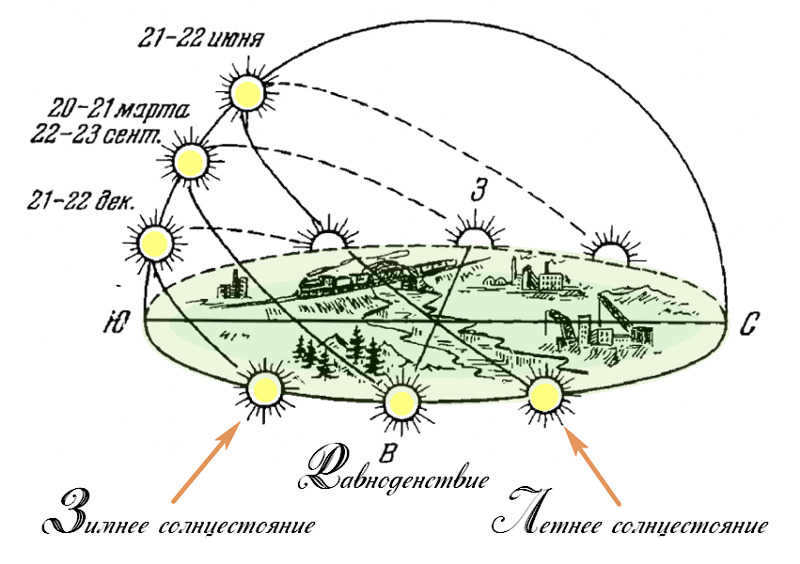
Where can you find the Sun at noon?
When using the Sun as a guide, it is important to account for its movement across the sky. If you stand with your back to the Sun at noon and spread your arms, you will find that the north is in front of you and the south is behind you.
While it is commonly believed that the Sun always points south at 12 noon, there are certain factors that can affect its position and cause it to deviate from true south, such as:
- True noon may not always align with the actual noon at a specific location;
- The Earth’s astronomical path is not a perfect circle, but rather an ellipse;
- The switch between summer and winter time can result in a deviation of up to 30 degrees.
Therefore, using the Sun as a guide at noon is only suitable for approximate location calculations.

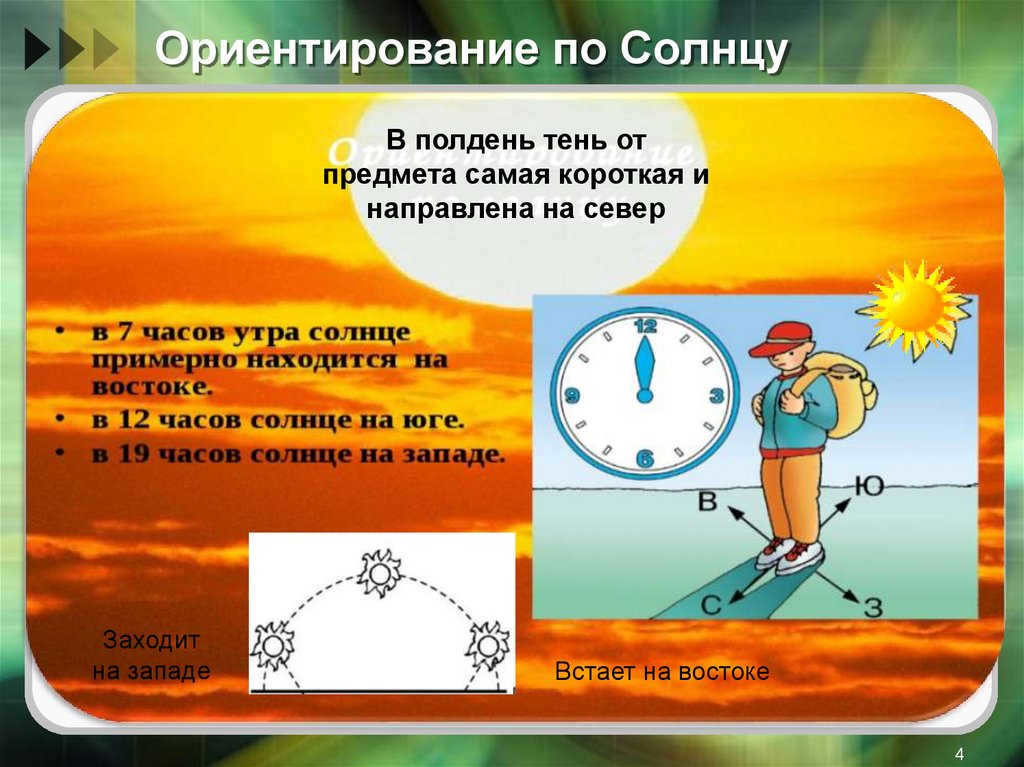
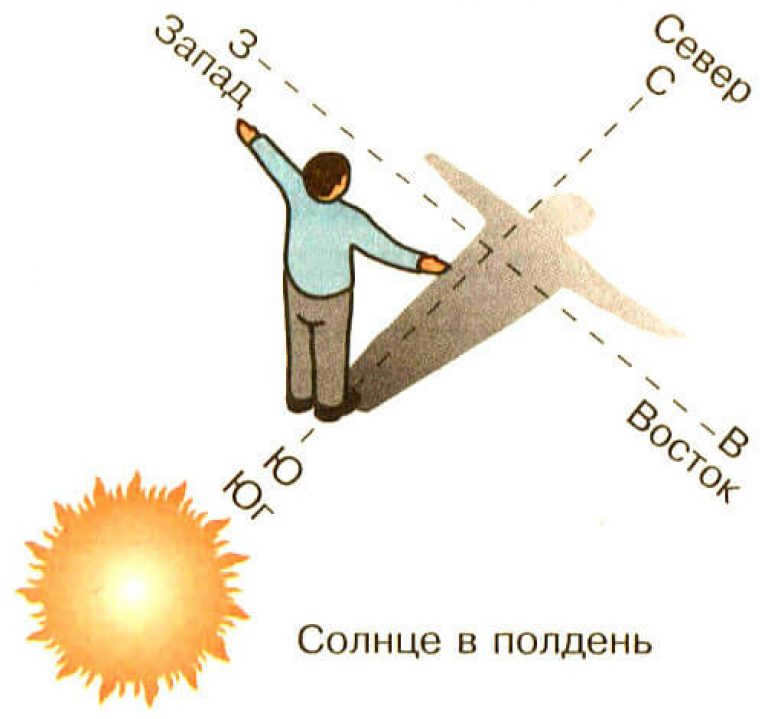
Determining the Sun’s Position
If you know the direction from which the Sun rises and that the compass arrow points north, you can calculate where the Sun will be at different times of the day:
- In the morning, the Sun is to the left of the colored arrow;
- In the afternoon, the Sun is on the south side;
- In the evening, the Sun is to the right.
It is also feasible to ascertain the luminary’s location based on its own shadow. A lengthy and diminishing shadow aligns with the period from daybreak to midday, vanishing at 12 o’clock in the afternoon, reemerging and lengthening during the interval from midday to sundown.
Space Perspective
The view of sunrise is quite extraordinary when seen from the space station. Even though it lasts for only a brief moment, astronauts are able to witness it a total of 16 times each day. In the region where the sun is just about to rise, the water takes on a golden hue and the formations of clouds appear absolutely breathtaking.
Interestingly, astronauts are able to see the true color of the main celestial body – a dazzling white. They not only observe it with wonder, but also capture images using a camera, so that people all around can marvel at this awe-inspiring spectacle.

The phenomenon of sunrise and sunset is a natural occurrence that takes place regularly in our vast universe. To be more precise, it is not the Sun that rises and sets, but rather it remains stationary. Contrary to the beliefs held by our ancient ancestors, it is not the celestial body that revolves around our planet, but rather it is the Earth, along with the other seven planets, that revolves around the Sun. Additionally, the Earth rotates on its axis in a west to east direction.
Having knowledge of the direction from which the sun rises can be quite beneficial for a tourist as it can help them navigate their surroundings and can even act as a substitute for a compass. Furthermore, there are those who are enthusiasts of sunset admiration. This article provides readers with information regarding the locations where the Sun rises and sets.
If you were to inquire of individuals, “From which direction does the Sun ascend?”, the majority would respond to this seemingly foolish question by stating, “The Sun ascends in the east”. However, this assertion is erroneous. The same can be said for the customary response to the inquiry, “Where does the Sun descend?”. Both of these answers are incorrect. To be more precise, they are accurate only in relation to two specific dates throughout the year. These dates are September 23 and March 21, which are commonly referred to as the autumn and vernal equinoxes. As one can easily deduce from their nomenclature, on these days the duration of daylight and nightfall are evenly divided – 12 hours of daylight and 12 hours of darkness. Hence, it is on these occasions that the Sun unmistakably rises in the east and sets in the west.
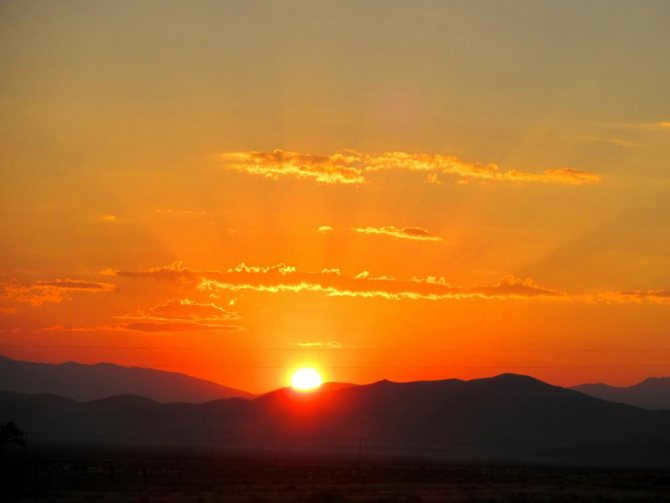
At different times, the Sun moves across the celestial sphere in a completely unique manner, resulting in either a shorter trajectory (when the night is longer than the day) or a longer one (when the day is longer than the night).
Furthermore, it is crucial to mention two additional significant dates – December 22 and June 21. These dates mark the winter and summer solstices, respectively. As the name suggests, on these days the Sun remains in the sky for the longest period of time. However, it is important to note that the winter solstice is experienced in relation to the Southern Hemisphere, while the summer solstice pertains to the Northern Hemisphere. The reasoning behind this distinction is quite fascinating.
Is it true that fire does not cast a shadow? No, fire does cast a shadow. The truth is that fire is not uniform and consists of not only layers of flames with different temperatures and colors of combustion, but also small particles that surround the flames. In order to make the shadow of the fire more visible, a brighter light source should be directed towards the flame to create contrast. Is it true that the Earth orbits around the Moon? The Earth and the Moon orbit around each other. The orbits of these two celestial bodies have a common center of mass, located about 1,600 kilometers below the Earth’s surface. As a result, the Earth undergoes three different rotations: around its own axis, around the Sun, and around this center of mass. Feeling confused? Don’t worry, even Newton found the motion of the Moon to be mind-boggling.
Does the sun really rise in the west in the Southern Hemisphere? No, the sun rises in the East in both the Southern and Northern Hemispheres. The direction of sunrise is determined by the rotation of the planet. In the Northern Hemisphere, the sun appears to move in a clockwise direction from south to west. However, in the southern hemisphere, it appears to move from east to west across the northern part of the sky. As a result, its motion is actually counterclockwise.
Is it correct that the Sahara Desert is the driest place on Earth? No, the driest place on Earth is actually Antarctica. Certain regions of this continent have not experienced rainfall for a staggering two million years. The average annual precipitation in Antarctica is roughly equivalent to that of the Sahara (25 millimeters per year), but there is a 2% portion of the continent known as the Dry Valleys, which is entirely devoid of ice and snow and never experiences any rainfall.
Do dolphins really not consume water? Yes, it is true that dolphins do not drink water. They obtain their necessary fluids from their diet, primarily consisting of squid and fish, and by metabolizing fat within their bodies, which produces water as a byproduct.
Is it true that the northern blue whale is the largest living organism on the planet? While the blue whale is indeed the largest modern animal, it is not the largest living organism on earth. Surprisingly, that title goes to a mushroom colony. The largest officially registered living organism on Earth can be found in the Malur National Wildlife Refuge in Oregon, spanning an impressive 890 hectares. The majority of this organism exists underground, taking the form of a massive bed of white fungus that intertwines with tree roots, ultimately leading to tree death. Occasionally, parts of the fungus break through the soil, appearing as harmless groupings of mushrooms. It was previously believed that these clusters were independent, but recent scientific research has revealed that they are actually part of a single, interconnected organism.
Can a cobra really be mesmerized by music? No, the cobra that emerges from the “hypnotist’s” basket is not actually responding to the sound of the flute, but rather to its shape. Snakes cannot differentiate music, even though they are not deaf. Snake hearing is attuned to a frequency range of vibrations and sounds that are only produced by larger animals, so music holds no significance for snakes. The “mesmerized” cobra, feeling threatened, begins to sway in sync with the movements of the instrument, preparing itself to defend if necessary.
Is it true that the skin is the largest organ in the human body? Indeed, the skin accounts for approximately 20% of the body’s weight. When stretched out, it can cover an area of up to two square meters.
Is it true that humans possess a sixth sense? Absolutely, and it’s not just one additional sense, there are at least nine. The five senses we are all familiar with are sight, hearing, taste, smell, and touch. However, there exist four other commonly recognized senses. Thermoception – the ability to sense warmth on our skin. Equibrioception – the sense of balance, which is determined by the fluid-filled cavities in our inner ear. Nociception – the perception of pain. Proprioception – the awareness of our body and its parts, even when they are out of sight or touch.
Various Kinds of Hemispheres and Their Distinctions
There exist a total of four distinct types of hemispheres – Southern, Northern, Western, and Eastern. To briefly elaborate on the Western and Eastern hemispheres, it is worth mentioning that they vary in terms of time zones. In other words, when daylight illuminates the Western Hemisphere, darkness envelops the Eastern Hemisphere, and vice versa. This phenomenon is a result of the Earth’s rotation on its axis. As the Earth spins, it exposes different regions to the Sun at different times throughout the day.
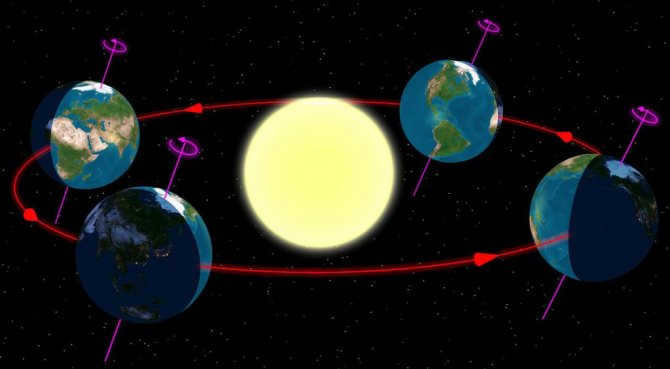
However, our focus lies on the Northern and Southern hemispheres, which exhibit contrasting seasonal patterns. In the Northern Hemisphere, winter coincides with summer in the Southern Hemisphere, and vice versa. Similarly, spring and fall are reversed between the two hemispheres. This phenomenon can be attributed to the Earth’s orbit around the Sun and the uneven distribution of sunlight.
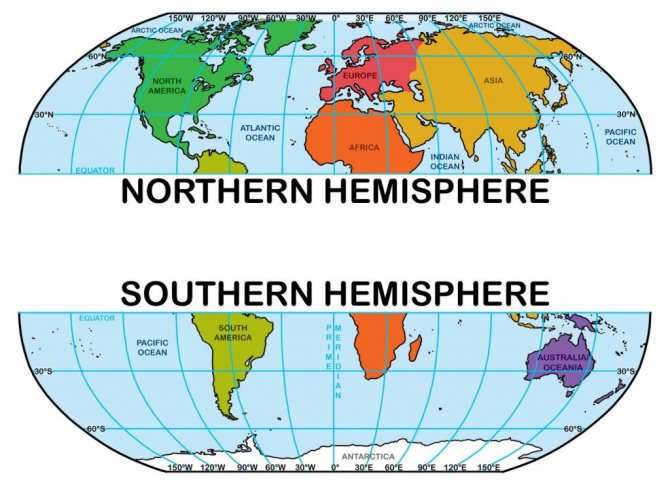
Fascinating Trivia
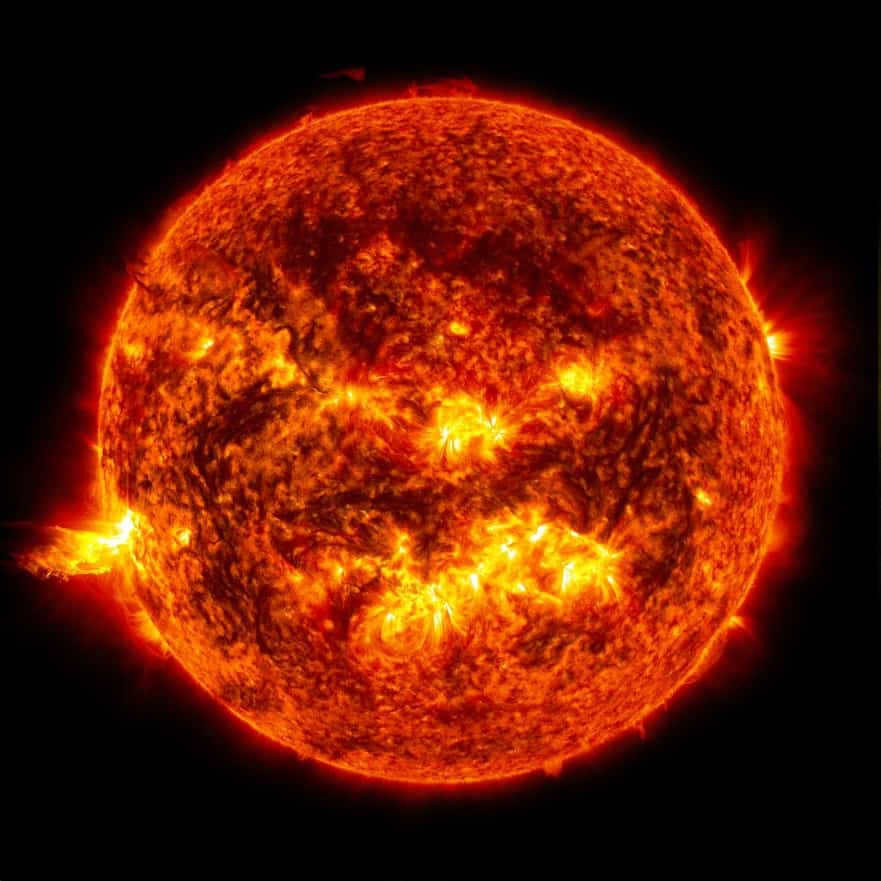
Discover the most fascinating information about the Sun, the singular star in our solar system.
It has the capacity to contain a million Earths within its massive body.
- If we were to fill the Sun with Earths, we could fit 960,000 of them. However, if we were to compress them and remove any free space, that number would increase to 1,300,000. The surface area of the Sun is 11,990 times larger than that of the Earth.
The Sun accounts for 99.86% of the total mass in the solar system.
- The difference in diameter between the Sun’s equator and poles is a mere 10 kilometers. This means that the Sun is one of the celestial bodies that comes incredibly close to being a perfect sphere.
The temperature at the Sun’s core reaches a staggering 15 million degrees Celsius.
- The temperature in the core of the Sun, where hydrogen is transformed into helium through fusion, allows it to reach extraordinary levels. Despite the natural tendency for hot objects to expand and potentially explode, the Sun is held together by its powerful gravitational force. Meanwhile, the surface temperature of the Sun is a relatively moderate 5780 °C.
At some point in the future, the Sun will consume the Earth.
- Once the Sun exhausts its hydrogen supply in approximately 130 million years, it will transition to helium. This transition will cause the Sun to expand and engulf the first three planets, including Earth. This phase is known as the red giant stage.
Eventually, the Sun will shrink to the size of Earth.
- After the red giant phase, the Sun will collapse and leave behind a highly compressed mass resembling the size of Earth. This final stage is known as the white dwarf stage.
It takes eight minutes for the Sun’s rays to reach our planet.
- The Sun moves at a speed of 220 kilometers per second.
The Sun is located 24000-26000 light years away from the galactic center, resulting in an orbital period of 225-250 million years.
- The distance between the Earth and the Sun varies throughout the year.
Due to the elliptical orbital path of the Earth, the distance ranges from 147-152 million kilometers (astronomical unit).
- The Sun is an average-aged star.
At 4.5 billion years old, the Sun has already consumed approximately half of its hydrogen supply. However, this process will continue for another 5 billion years.
- The Sun possesses a strong magnetic field.
During magnetic storms, solar flares become prominent. This phenomenon is observed in the formation of sunspots, where magnetic lines twist and spin similar to Earth’s tornadoes.
The formation of the solar wind is initiated by the star
- The solar wind, which consists of charged particles, travels throughout the entire solar system at a speed of 450 kilometers per second. This wind becomes apparent when the Sun’s magnetic field expands.
- The term “solar” has its origins in Ancient Anglo-Anglian and is derived from the word meaning “south”. There are also Gothic and Germanic roots associated with this word. Prior to 700 AD, Sunday was referred to as “sunny day”. Translation also played a role in the evolution of the word. The original Greek phrase “heméra helíou” has transformed into the Latin term “dies solis”.
Where can you see the Sun rise and set?
If we talk about the Northern Hemisphere, during the summer months, the Sun rises in the direction between north and east, and sets between north and west. In winter, it rises between south and east, and sets between west and south. In autumn and spring, the Sun rises between northeast and southeast, and sets between northwest and southwest. On the days of the autumn and spring equinoxes, as mentioned earlier, it rises and sets exactly in the east and west, respectively.
In the Southern Hemisphere, it is the opposite. This is what causes the difference in seasons.
It should be noted that the variation between night and day increases as you move further north in the Northern Hemisphere and further south in the Southern Hemisphere. In other words, the closer a region is to the pole, the more pronounced the contrast between night and day. Conversely, the closer a region is to the equator, the less noticeable the difference between day and night.
For example, at the poles, nights can last for several months, just like the days. Conversely, at the equator, there is very little distinction between night and day. As a result, the equator does not experience distinct winter and summer seasons, but rather enjoys consistent light throughout the year.
Geography and climate of the Southern Hemisphere
Compared to its counterpart in the North, the Southern Hemisphere boasts a higher proportion of water and a smaller land mass.
The Southern Hemisphere is dominated by vast bodies of water, including the South Pacific, South Atlantic, Indian Ocean, and several seas such as the Tasman Sea between Australia and New Zealand and the Weddell Sea near Antarctica. These bodies of water account for approximately 80.9% of the region, leaving a mere 19.1% as land. In contrast, the Northern Hemisphere is predominantly land, with very little water.
The Southern Hemisphere is comprised of several continents, namely Antarctica, about one-third of Africa, the majority of South America, and nearly all of Australia.
The most common geographical zone is the southern temperate zone, stretching from the Tropic of Capricorn to the start of the Arctic Circle at 66.5°S. This region is characterized by a moderate climate with typically high levels of rainfall, cold winters, and warm summers. Some countries located within the southern temperate zone include most of Chile, all of New Zealand, and Uruguay.
The region immediately north of the southern temperate zone, situated between the equator and the Tropic of Capricorn, is referred to as the tropics. It is an area where warm temperatures and precipitation are present throughout the year.
The Antarctic continent is located south of the southern temperate zone, and it is surrounded by the Antarctic Circle. Unlike the rest of the Southern Hemisphere, Antarctica is not dominated by water, as it is a vast land mass. Additionally, Antarctica experiences much colder temperatures compared to the Arctic in the Northern Hemisphere due to its size.
In the Southern Hemisphere, summer occurs from December 21 until the vernal equinox around March 20. Winter, on the other hand, lasts from June 21 to the autumnal equinox around September 21. These time periods are determined by the Earth’s axial tilt. From December 21 to March 20, the southern hemisphere is tilted towards the sun, while from June 21 to September 21, it is tilted away from the sun.
It is common knowledge that the sun is the central star that the Earth and other planets orbit. It is widely known that this celestial object rises in the East and sets in the West. However, not everyone is aware of the specific location where the sun sets and the reasons behind it. In the following article, we will delve into the topic of the sun’s rising and setting and explore its significance.
How the movement of the sun occurs
Once the sun emerges on the horizon, it begins its uninterrupted journey. Throughout the course of the day, one can observe the sun’s progression across the sky. In reality, it is not the sun that moves, but rather the Earth that revolves around the star. This entire process takes 24 hours.
Explaining why rooms in southern-facing apartments are consistently brighter than their counterparts on other sides of the world is quite simple. It all comes down to the sun’s movement along the southern projection of the horizon throughout the day, eventually reaching its peak. This scientific phenomenon is known as the culmination of the celestial body.
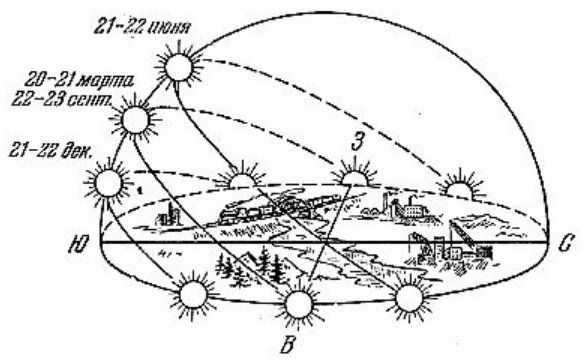
How the duration of the day is influenced by the setting of the sun
It is common knowledge that the duration of the day varies significantly between winter and summer. During the warmer months, the daylight hours appear much longer than in winter. Surprisingly, this phenomenon can be easily explained. The duration of daylight is directly influenced by the sun. Individuals who are unaware of this information may mistakenly believe that the length of the day is affected by the speed at which the celestial luminary moves. However, this is a complete misconception. In reality, the duration of the day is determined by the position of the sun during sunrise and sunset. It is not difficult to understand that this position changes throughout the calendar year.

Sunset Point Movement
Twice a year, on March 20 and 21, as well as September 22 and 23, the sun sets in the West. These dates are also known as the equinoxes, when the sun sets exactly in the West and the day length is exactly twelve hours. These may be the only dates when the sun truly sets on the Western horizon.
Following the vernal equinox, the sun starts to rise higher in the sky, leading to longer days. As a result, the positions of sunset and sunrise gradually shift towards the north with each passing day. This entire process continues until June 21, when the solstice occurs. On this day, the sunset reaches its maximum northern point, resulting in a longer duration of daylight.
In cities located above the Arctic Circle, the points of sunset and sunrise merge together, causing the sun to never set below the horizon and creating a phenomenon known as the polar day.

It is a fascinating fact that on this particular day, the polar day transitions into the polar night. The sun does not appear above the horizon during this phenomenon. This occurrence is mainly caused by the convergence of the points where the sun sets and rises in the southern region. Following the winter solstice, a gradual shift begins to take place. The points of sunset and sunrise start to move in the opposite direction, resulting in the observation of longer daylight hours.
Peculiarities of daylight hours in the southern hemisphere
In the southern hemisphere of the globe, things are quite different compared to the northern hemisphere. While the northern hemisphere experiences long daylight hours during a certain time of the year, the opposite happens in the southern hemisphere, resulting in shorter daylight hours. This reversal can be observed in various aspects. For example, when the northern hemisphere celebrates the autumnal equinox, the southern hemisphere experiences the spring equinox. Additionally, the sun reaches its highest point in the sky in the northern hemisphere, while in the southern hemisphere, it sets directly in the western part of the sky, just like it does for us.

Fascinating information regarding the sun and its setting
The sun and its position in the sky have always intrigued individuals. There exist captivating details that demonstrate the captivating and enigmatic nature of this celestial body.

- As the sun sets, the temperature gradually decreases and it becomes colder. However, surprisingly, the temperature doesn’t reach its lowest point at night. The coldest period is actually in the morning, just before sunrise.
- People all around the world witness the sunset every day. However, at the poles, this phenomenon can only be observed once a year.
- In ancient times, the sun was used as a way to tell time. The setting of the sun sometimes served as a sign of the time of day. Shadows cast by special objects were used to determine everything. This is how the first clocks and even calendars were created.
To summarize, I would like to emphasize that the sun is a brilliant star that provides us with both warmth and light on a daily basis. pinpointing the exact location of where this celestial luminary sets is a difficult task. The position of the sunset varies daily, influenced by the changing seasons.





